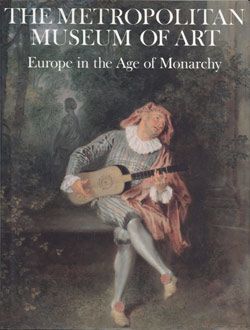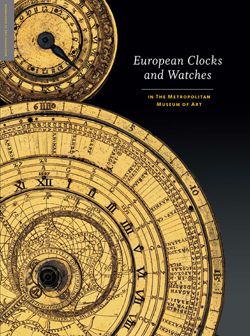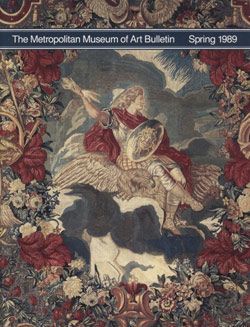Clock with pedestal
The eight-day, spring-wound movement of this timepiece, signed “J. Thuret,” was most likely the work of Isaac II Thuret, clockmaker to Louis XIV and a member of an important family of horologists. In May 1691 he organized a lottery with a repeater clock on a pedestal as first prize. This piece was fitted with a barometer and, in addition, was richly decorated with gilt bronze. It appears to have been very similar to the Museum’s clock and gives a good indication of its date. Just like the first prize in the lottery, the Museum’s clock was intended to hold a barometer in its pedestal (see detail far right). Five inscriptions near the top alluding to various weather conditions, ranging from tourment[e] (tempest) to tres sec (very dry), form the perimeter of the dial of a barometer, although the piece appears never to have been used as such.
The case and pedestal of the clock, ornamented with marquetry of tortoiseshell, brass, and pewter, have been attributed to the royal ébéniste André-Charles Boulle, “who makes a sort of Mosaick works extremely neat, and which the Curious preserve very choicely,” according to Germain Brice’s popular guidebook of 1687, A New Description of Paris.[1] Boulle is known to have made numerous clock cases in his workshop, which was housed in the Palais du Louvre, not far from the lodgings of the influential artist Jean Bérain. Some of Bérain’s engraved designs were used for the decoration of this clock. There is a striking harmony between the ornament of the case and of the dial. The timepiece is surmounted by royal symbols in gilt bronze: a sunburst with a mask of the sun god Apollo, a crown, and a pair of lyres, as well as a pair of cornucopias, the traditional symbol of abundance. Although all these emblems clearly refer to the Sun King and his reign, no royal provenance for this clock has been established.
[Daniëlle Kisluk-Grosheide, 2010]
Footnotes:
1. Germain Brice. A New Description of Paris: Containing a Particular Account of All the Churches, Palaces, Monasteries...with All Other Remarkable Matters in That Great and Famous City. London, 1687, pp. 20–21.
This image cannot be enlarged, viewed at full screen, or downloaded.
This artwork is meant to be viewed from right to left. Scroll left to view more.















